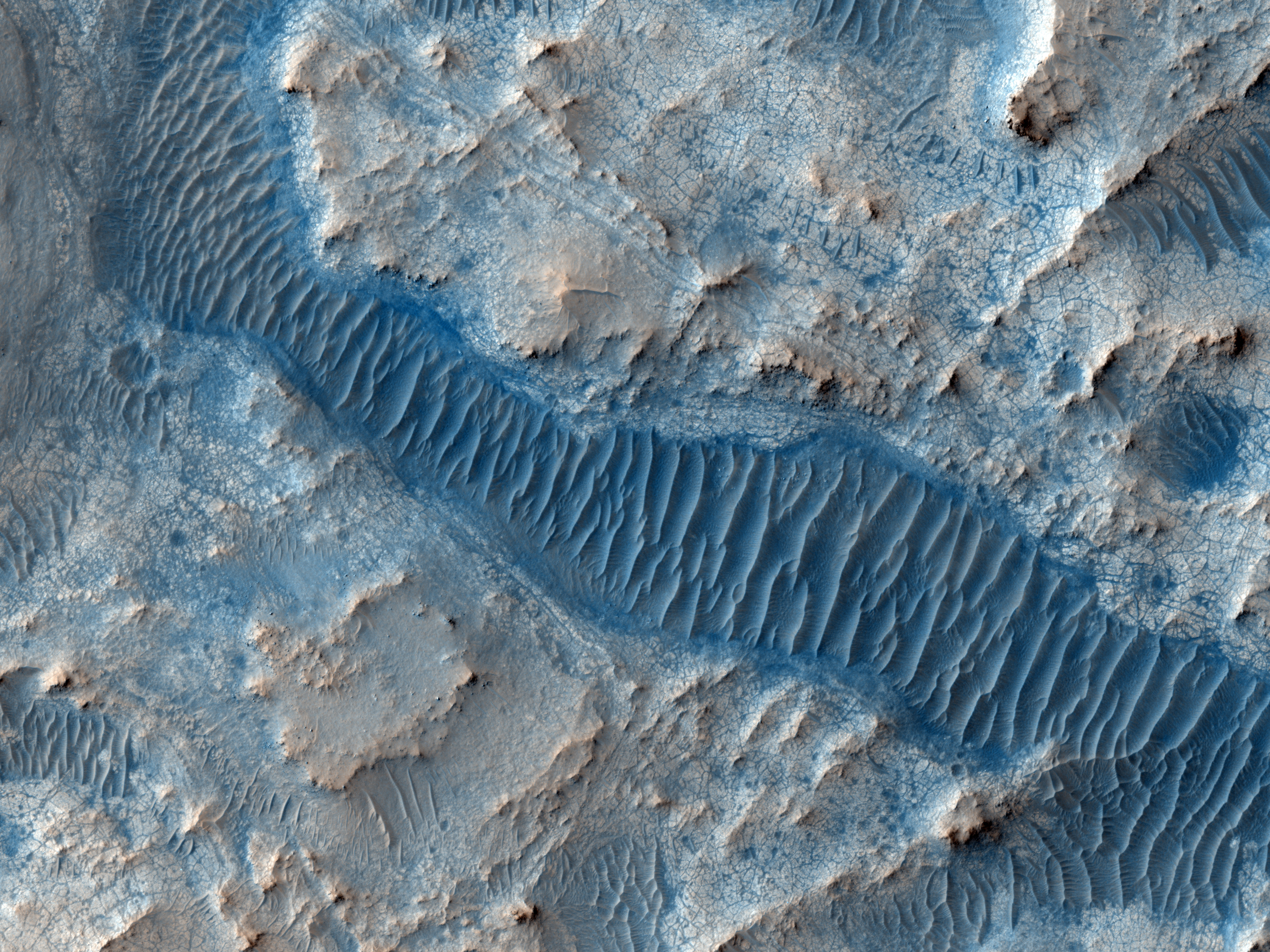Today's Image of Mars is a picturesque example of what became of the rivers on Mars and the effects those ancient bodies of water had on the surface. You can see in this image that much of the terrain is composed of light and moderately toned layered material. The cratered, lower elevation areas tend to be darker.
 |
| Clicking on this image will take you to the original high resolution one from HiRISE. [See their caption] |
Running through the middle of this image is a river valley that connects to East Jezero Crater. The river valley is darker than the surrounding terrain because the flowing water deposited sediments there that are not present in the surrounding area. These sediments have a darker tone than the surrounding terrain and are most likely more densely packed. Further HiRISE examination of this riverbed will help scientists to determine its composition and it could even help them determine how long water flowed through the river.
While there is little doubt that water created this riverbed, we must not exclude other possibilities. For example, this feature could have conceivably been created by lava. Another possibility, though unlikely, that does include water is that the lower elevation areas may actually have been higher than the surrounding terrain at some point. The way this would work is much like the way inverted riverbeds are formed: water deposits sediments and compresses them into a very dense, wear-resistant material. If the darker features seen above were raised higher above water they would not have received the same coating. and would be less wear-resistant. When the water disappeared from Mars the terrain with the top layer of dense sediments would not erode as easily as the higher elevated terrain. After millions of years the raised features would become so eroded that they became level with the rest of the terrain, but because they would still be less wear-resistant they would continue to be eroded into what we see today. If this were the case then the lighter material we see in the image above would be sedimentary deposits.
In this case the above scenario is highly unlikely, but perhaps in some locations on Mars there was a great ocean and the islands in that ocean became inverted after the water disappeared and millions of years of erosion took place. Not likely, but it's something that hasn't really been considered yet.

0 comments:
Post a Comment